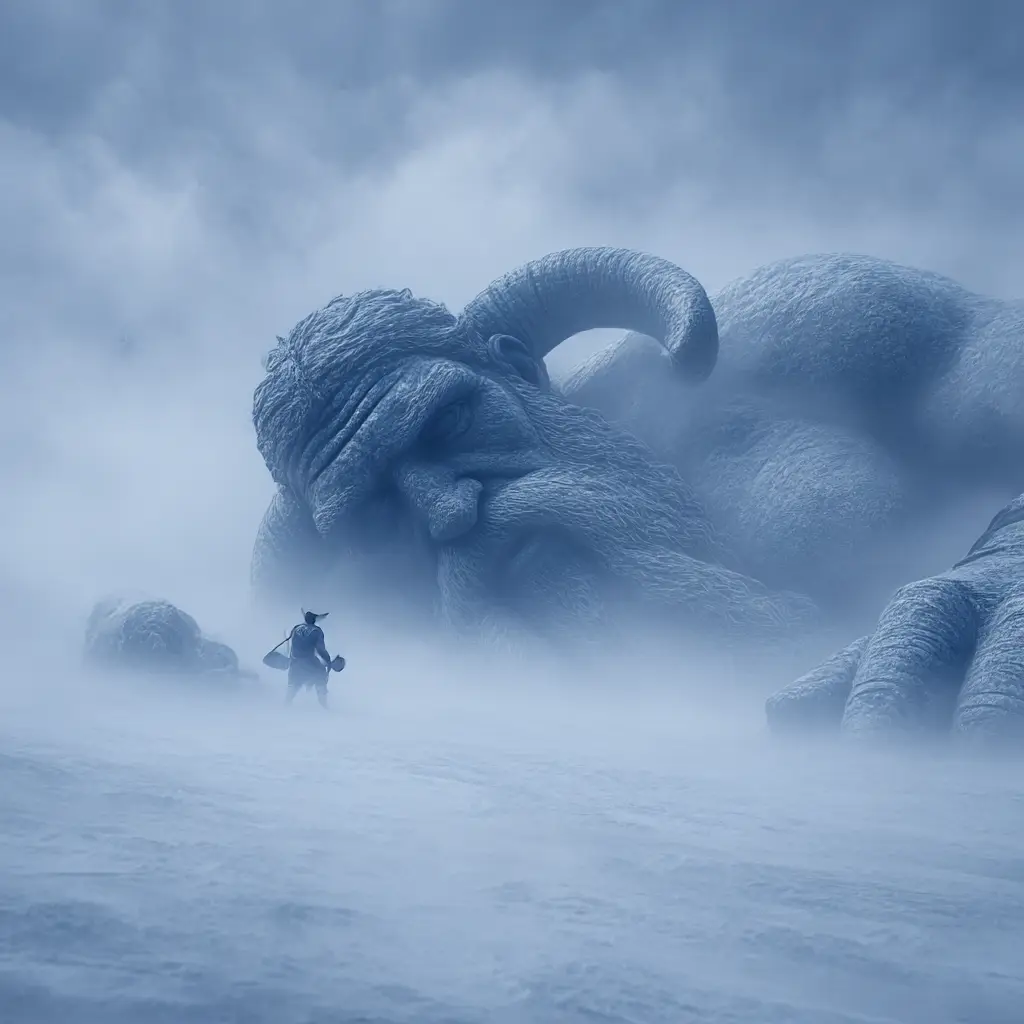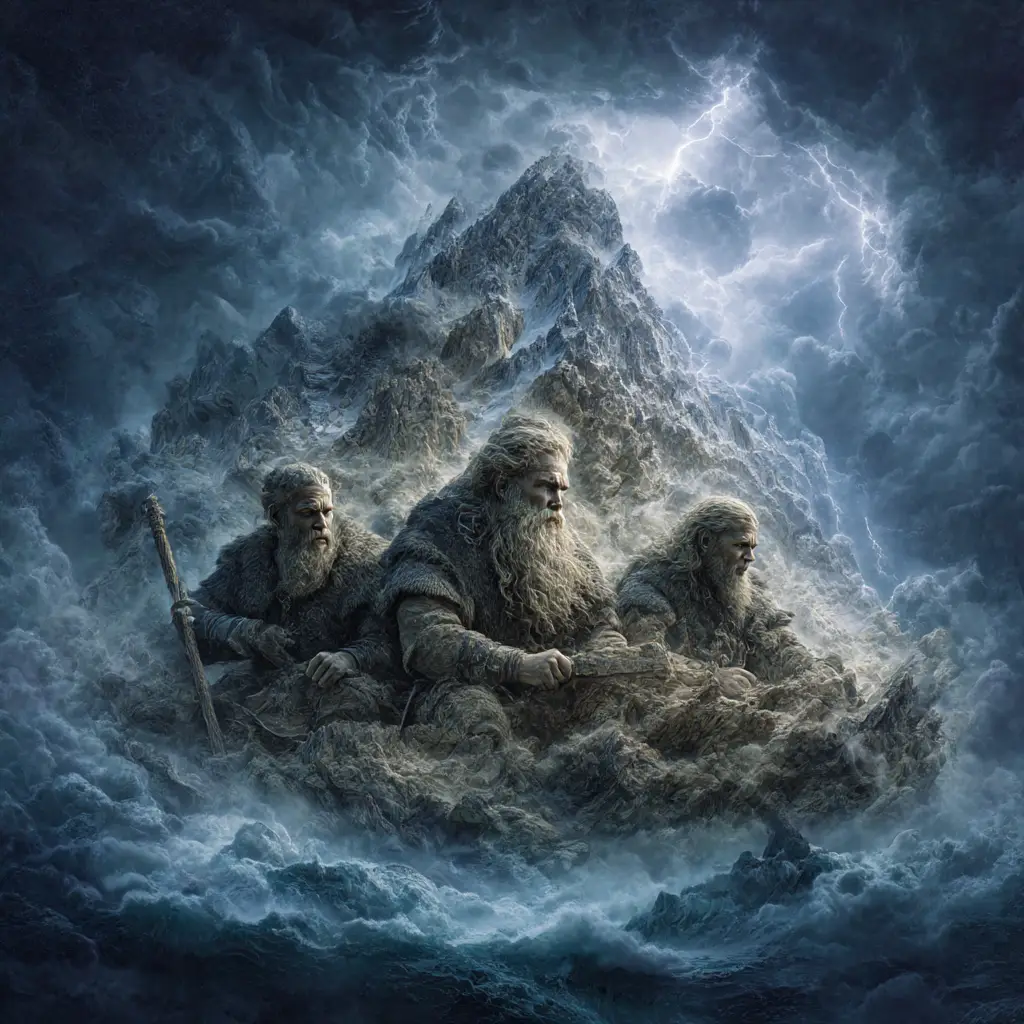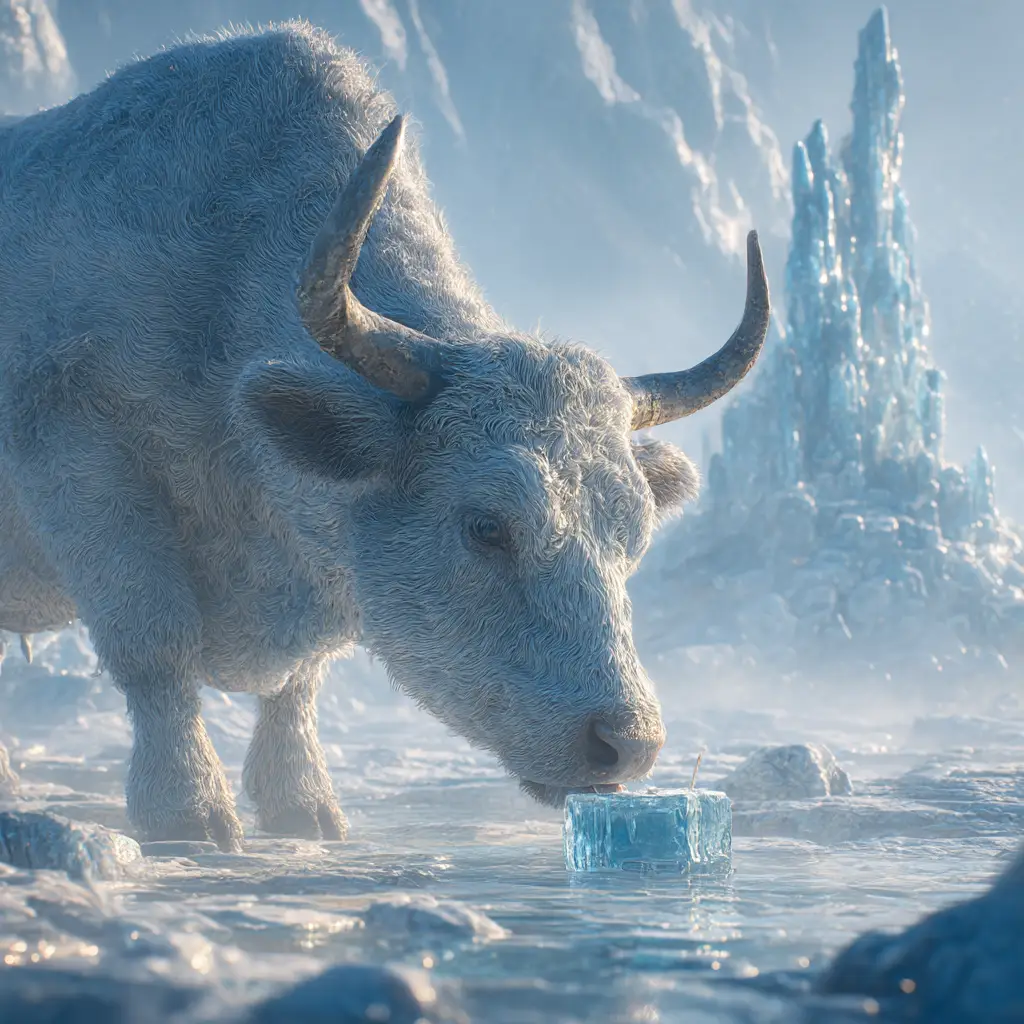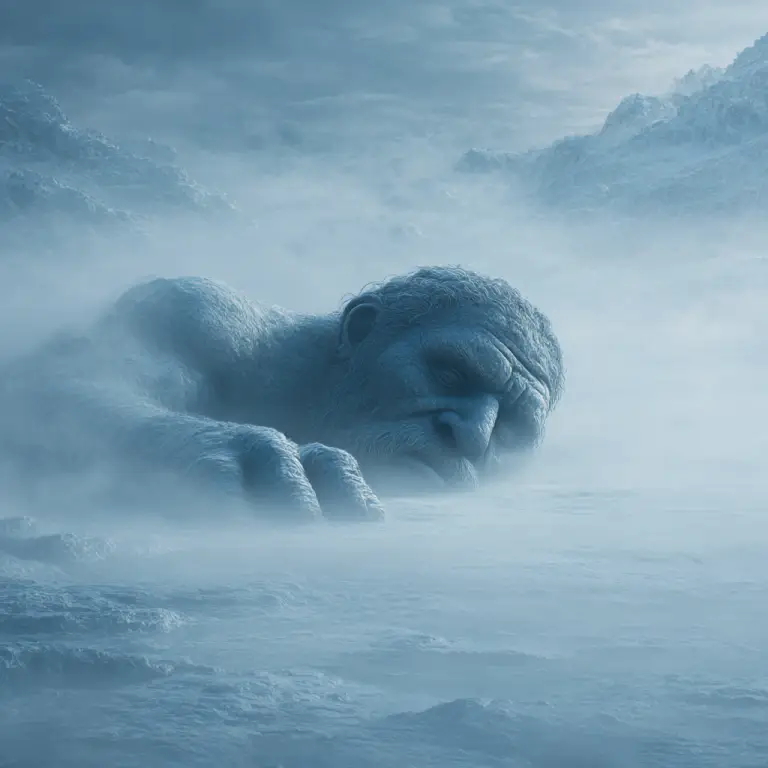In the rich and complex world of Norse mythology, the story of creation begins not with peace and order, but with a powerful clash between elemental forces. The myths were preserved through oral tradition in Scandinavia and later written down in the 13th century, primarily in texts like the Poetic Edda and Prose Edda. These early tales set the foundation for the Norse understanding of the cosmos, the gods, and the origins of life itself.
The Ginnungagap – The Great Void
Before time, land, or sky existed, there was only Ginnungagap, a vast and yawning void. To the north of this emptiness lay Niflheim, a realm of cold, frost, and mist. To the south was Muspelheim, a land of fire, heat, and flame. The meeting of these two realms within the void sparked the first act of creation.
Ymir – The First Being
When the frost of Niflheim met the fire of Muspelheim, the melting ice gave rise to Ymir, the first giant, or jötunn. From Ymir’s body sweat emerged other giants, and the race of jötnar was born. Ymir is considered the ancestor of all giants, but he was not alone for long.
The Birth of Audhumla
Alongside Ymir, the melting ice also formed Audhumla, a great primeval cow. From her udders flowed four rivers of milk that nourished Ymir. Audhumla herself survived by licking the salty ice blocks, and as she did so, she uncovered Búri, the first of the Aesir gods. Búri was the grandfather of Odin, the chief god of the Norse pantheon.
The Rise of the Gods
Búri had a son named Borr, who married a giantess called Bestla. Together they had three sons: Odin, Vili, and Vé. These three brothers would become central to the shaping of the world. As the first gods, they sought to bring order to the chaos.
The Death of Ymir and the Creation of the World
Odin, Vili, and Vé killed Ymir in a violent cosmic battle. So much blood flowed from Ymir’s body that it drowned nearly all the other giants. From Ymir’s vast corpse, the brothers created the world:
- His flesh became the earth
- His blood formed the seas and lakes
- His bones turned into mountains
- His teeth and fragments of bones became rocks
- His skull was lifted to create the sky, held up by four dwarves: North, South, East, and West
- Sparks from Muspelheim were flung into the sky to become the stars
The First Humans
Once the world was formed, the gods created the first human beings from two fallen trees. Ask (ash tree) and Embla (elm tree or vine) were given life, intelligence, and senses. Ask and Embla became the ancestors of all humankind.
The Nine Realms
The newly formed cosmos was structured into Nine Realms, each home to different beings:
- Asgard – realm of the Aesir gods
- Midgard – realm of humans
- Jotunheim – land of the giants
- Vanaheim – home of the Vanir gods
- Alfheim – realm of the light elves
- Svartalfheim – land of the dwarves (also known as Nidavellir)
- Niflheim – world of ice and mist
- Muspelheim – world of fire
- Helheim – realm of the dead
All of these realms are connected by Yggdrasil, the great World Tree, which stands at the centre of the cosmos and links all existence together.
The Norse creation myth is not a story of divine perfection, but of struggle, conflict, and transformation. It reflects a worldview shaped by harsh natural environments and the cyclical nature of life, death, and rebirth. The myth’s emphasis on chaos giving way to order sets the stage for the later stories of gods, monsters, and the eventual end of the world in Ragnarök.
This mythological beginning continues to inspire stories, art, and scholarship, offering a glimpse into how the ancient Norse people understood their place in the universe.



